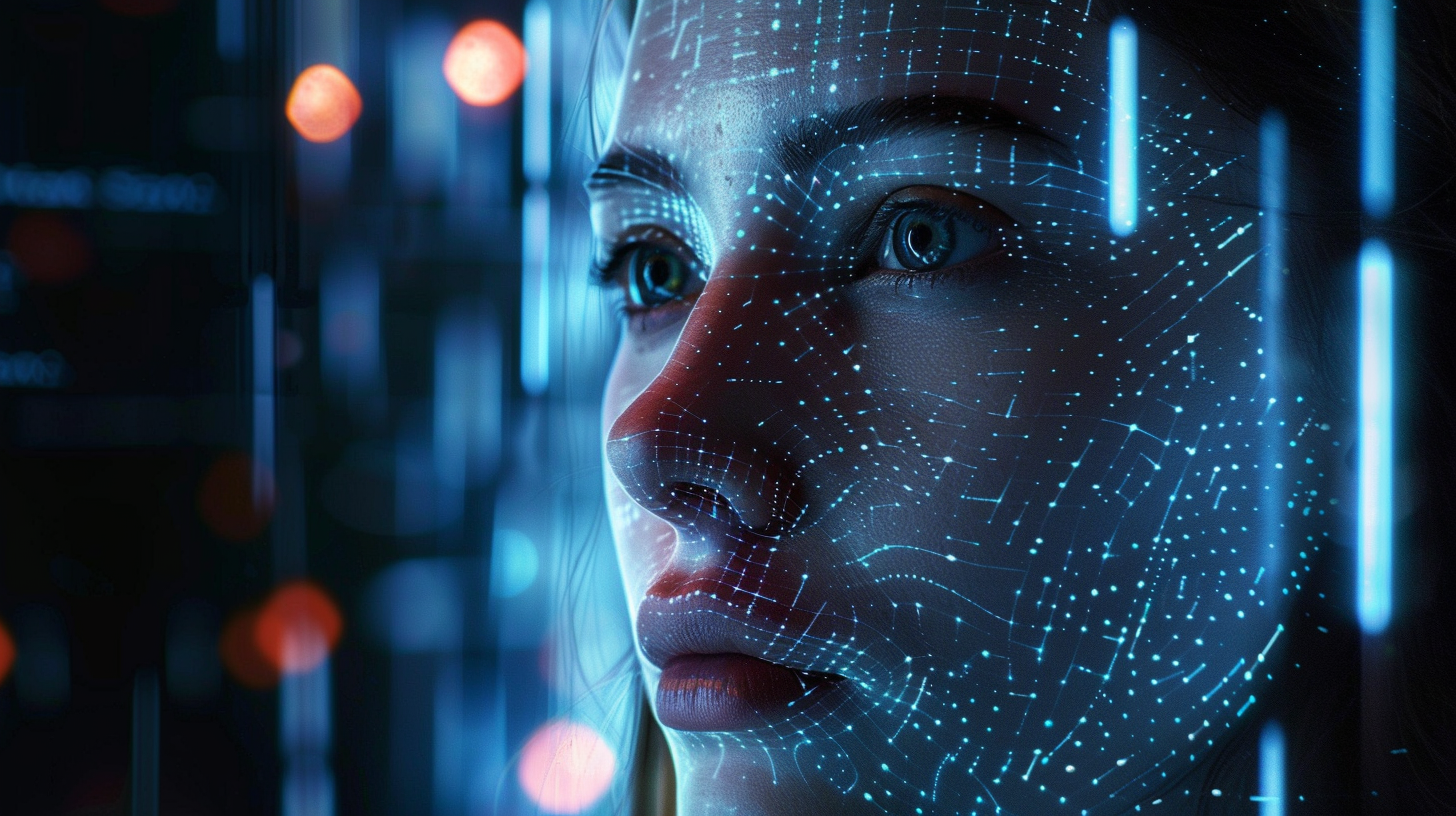Table of Contents Show
In our digital Colosseum, we’re not just spectators but gladiators fighting against the rise of deepfakes, where technology both empowers and combats manipulated media. We’ve harnessed AI as our champion, developing early detection methods and pushing social media platforms to join the fray. But as the technology behind deepfakes evolves, so must our strategies. We’re standing at the crossroads of innovation and deception, wondering how we’ll stay a step ahead of manipulators. The journey ahead promises new alliances and breakthroughs, inviting us to explore how we’ll secure the future of authentic communication.
Key Takeaways
- AI algorithms are highly effective in detecting deepfakes, enhancing content trust.
- Blockchain and digital watermarking safeguard content authenticity and integrity.
- Machine learning models continuously improve to keep pace with evolving deepfake techniques.
- Public education and legal frameworks are crucial in combating manipulated media.
Understanding Deepfakes
At the heart of the issue, deepfakes exploit advanced artificial intelligence to create convincingly manipulated media that’s hard to distinguish from reality. We’re witnessing a digital phenomenon that’s shaking the very foundation of trust and integrity in the media we consume daily. It’s not just about creating fake news or fabricating a celebrity’s statement anymore; it’s about the potential to undermine elections, incite violence, and violate personal consent. The threat to our freedom to access truthful information is real and growing.
We’re in a race against time to understand the implications of deepfakes on society. They’re more than just sophisticated forgeries; they represent a new era where seeing is no longer believing. This challenges our freedom to make informed decisions, affecting everything from politics to personal relationships. The essence of democracy relies on our ability to discern truth from falsehood, a task made increasingly difficult by these technological marvels.
The battle against deepfakes isn’t just technical—it’s critical. We’re fighting for the right to live in a world where truth can’t be easily manipulated. It’s about preserving our collective freedom to trust what we see and hear. As we navigate this complex landscape, it’s vital to stay informed and vigilant, recognizing the inherent risks deepfakes pose to our society. Together, we can push for transparency and accountability in media, ensuring that the digital world remains a space for genuine expression and not a battleground for deception.
The Technology Behind Deepfakes
Delving into the technology behind deepfakes, we find ourselves facing a complex interplay of artificial intelligence and machine learning algorithms that can convincingly mimic reality. It’s an arena where freedom and creativity meet the cutting-edge of tech, allowing for the creation of content that’s both innovative and, in the wrong hands, potentially misleading.
At the heart of this technology are two primary components: generative adversarial networks (GANs) and deep learning techniques. GANs are basically a tug-of-war between two neural networks – one generating fake images or videos (the forger), and the other trying to detect these counterfeits (the detective). Through this continuous battle, the forger becomes increasingly skilled at creating realistic fakes, learning from each round of feedback.
We also leverage deep learning to analyze vast datasets of images, videos, and sounds. This empowers the system to understand and replicate the nuances of human expressions, movements, and even voices with startling accuracy. It’s how we’ve gotten to a point where deepfakes can be almost indistinguishable from genuine content.
But it’s not just about the tech; it’s about what we do with it. We’re standing at a crossroads, where we have the power to shape the future of media. We’re committed to using these tools responsibly, ensuring that they serve to enhance our freedom, creativity, and pursuit of truth. As we forge ahead, we’re mindful of the balance between innovation and integrity, ensuring that our advancements celebrate human expression without compromising on authenticity.
The Threats Posed by Deepfakes
We’re now turning our attention to the dangers that deepfakes pose, which are significant and multifaceted. They challenge our ability to detect manipulated media, heighten the risk of political manipulation, and erode the social trust that glues our communities together. It’s essential that we grasp these threats to navigate the tricky landscape of digital media.
Deepfake Detection Challenges
As we explore the domain of deepfake detection, it’s clear that the sophistication of these artificial intelligence-generated forgeries presents a significant challenge. The race to develop robust detection tools is not just about preserving authenticity; it’s about safeguarding our freedom to believe in what we see and hear.
| Challenge | Impact on Freedom |
|---|---|
| Evolving Technology | Harder to trust content |
| Realism | Deeper societal distrust |
| Accessibility | Widespread misuse |
| Detection Lag | Temporary confusion |
| Legal Loopholes | Enforcement difficulties |
We’re in this together, fighting for the truth in a sea of manipulated content. Ensuring the freedom to discern reality from fiction isn’t just a technical challenge; it’s a necessary stand for the integrity of our shared reality.
Political Manipulation Risks
Deepfakes pose a significant risk to political integrity, potentially undermining the trust in democratic processes and institutions. As we navigate this complex landscape, it’s critical to understand the specific threats we’re up against:
- Election Interference: Fabricated videos can mislead voters, sway public opinion, and disrupt elections.
- Disinformation Campaigns: Politically motivated deepfakes can spread false narratives, targeting individuals or groups to skew public perception.
- Diplomatic Tensions: Manipulated media content can falsely portray international leaders or events, potentially escalating conflicts.
We’re committed to defending the very essence of our freedom by ensuring the authenticity of political discourse. It’s about safeguarding our right to make informed decisions, free from manipulation. The battle against deepfakes is not just about technology; it’s about preserving the core values of democracy.
Social Trust Erosion
Beyond the political domain, deepfakes also erode the very fabric of social trust, affecting how we perceive truth in our daily interactions. We’re now faced with a reality where seeing isn’t believing, and the implications are vast. Imagine doubting every video call, questioning the authenticity of family videos, or mistrusting news clips. This isn’t just about misinformation; it’s about the fundamental way we connect and trust each other.
We’re committed to fighting for a future where freedom isn’t compromised by technology’s darker uses. By leveraging advanced detection tools and advocating for digital literacy, we’re taking a stand. It’s about preserving our right to discern truth from manipulation, ensuring our social interactions remain genuine. The battle against deepfakes isn’t just technical; it’s a fight for our collective freedom.
Early Detection Methods
We’re exploring innovative techniques to swiftly identify manipulated media before it spreads. Our freedom to access genuine information is under threat from deepfakes, but by harnessing early detection methods, we’re taking a stand to protect it. These techniques not only help in safeguarding our digital ecosystem but also safeguard the integrity of content that reaches us.
To dive deeper, here are three key methods we’re currently employing:
-
Digital Watermarking: By embedding a unique, invisible digital code into original content, we can instantly verify authenticity. Should this content be tampered with, the watermark alerts us, enabling rapid response to halt the spread of falsehoods.
-
Blockchain Verification: Leveraging blockchain’s immutable nature offers a robust way to track and confirm the legitimacy of digital assets. Each piece of content is accompanied by a digital ledger, providing a transparent and unalterable history of its origins and modifications.
-
Reverse Image and Video Search: This involves analyzing media files across the internet to find their earliest occurrences. If discrepancies or alterations are detected between the original and current versions, it raises a red flag, prompting further investigation.
These early detection methods represent our frontline defense against manipulated media. They’re not just technical solutions; they’re our commitment to preserving freedom in the digital age. By being vigilant and proactive, we safeguard that truth prevails, defending our right to genuine, unmanipulated information.
AI in the Battle Against Deepfakes
Turning our focus to artificial intelligence, it’s pivotal in our ongoing fight to detect and neutralize deepfakes before they can cause harm. We’re leveraging AI to sift through mountains of data and identify manipulated media with an accuracy that far surpasses human capabilities. It’s a race against time, but we’re armed with the best tools technology has to offer.
AI isn’t just a tool; it’s our frontline defense. Through machine learning algorithms, we’re training systems to recognize the subtlest hints of digital tampering—details that would typically go unnoticed. We’re constantly refining these algorithms, making them smarter and more efficient with each iteration. It’s a dynamic battlefield, and we’re adapting at every turn.
To give you a clearer picture of how AI is shaping up in this battle, let’s look at some key aspects through this table:
| Aspect | Description | Impact |
|---|---|---|
| Detection Accuracy | AI algorithms have a high success rate in identifying deepfakes. | Reduces the spread of manipulated media. |
| Speed | AI can analyze vast amounts of content quickly. | Enables real-time detection and response. |
| Adaptability | Machine learning models evolve to counter new deepfake techniques. | Ensures long-term effectiveness in the fight against deepfakes. |
We’re not just fighting for the integrity of media; we’re defending our right to truth and authenticity in the digital age. Our commitment to leveraging AI in this battle underscores our determination to protect these values. It’s a confirmation of our resolve to stand against forces that would use technology to undermine our freedom.
Blockchain’s Role in Verification
Diving into blockchain technology, it’s reshaping the landscape of media verification with its unparalleled security features. As we explore further, it’s clear that this technology isn’t just about cryptocurrency; it’s a beacon of hope for those of us yearning for truth in the digital domain. Blockchain offers a decentralized platform that makes it nearly impossible for individuals to manipulate or falsify information without detection. This attribute is vital in the fight against deepfakes and manipulated media.
Here are three key ways blockchain is making a difference:
- Immutable Records: Once information is recorded on a blockchain, it cannot be altered or deleted. This permanence ensures that the original content can always be verified against its blockchain entry, providing a clear audit trail.
- Decentralization: Without a central point of control, blockchain operates across a network of computers. This means that no single entity has the power to tamper with the record, ensuring the integrity and reliability of the data.
- Transparency and Trust: Every transaction on a blockchain is visible to all participants, fostering an environment of transparency. This openness builds trust among users, who can verify the authenticity of the information themselves.
In our quest for freedom from manipulated media, blockchain stands out as a powerful ally. By leveraging its capabilities, we’re not just defending truth; we’re reclaiming our right to a reality untouched by falsehoods. As we continue to combat deepfakes, blockchain’s role in verification shines as a beacon of hope, ensuring the authenticity of digital content in an era of skepticism.
Digital Watermarking Techniques
Shifting our focus, let’s explore into the domain of digital watermarking techniques, an important tool in the arsenal against media manipulation. These techniques are our digital sentinels, subtly embedded into the fabric of digital content, from images to videos, ensuring that authenticity isn’t just a word in the dictionary but a reality we can trust.
We’re talking about an invisible layer, or sometimes visible but discreet, that marks media as genuine. This isn’t just about protecting copyrights; it’s a beacon of truth in an era where seeing shouldn’t always be believing. By embedding a digital watermark, creators encode a signature that whispers the content’s origin story, making any unauthorized alteration detectable. It’s our way of chaining the truth to the content, making sure it doesn’t drift away in the tide of manipulation.
But here’s where we truly stand up for our right to unmanipulated information. The beauty of digital watermarking doesn’t stop at its creation. It’s in the way we can automate the detection of these watermarks, allowing platforms and services to sift through mountains of data, identifying and flagging content that’s been tampered with. We’re empowering the digital ecosystem to self-regulate, to self-defend.
Public Awareness and Education
While we bolster our defenses with digital watermarking, it’s equally important to enhance public awareness and educate individuals on recognizing manipulated media. The freedom to discern truth from falsehood in the digital world is not just a right but a necessity for maintaining the integrity of our shared reality. As we navigate this era of unprecedented digital manipulation, equipping ourselves with knowledge and critical thinking skills becomes paramount.
Here are three key strategies to empower the public:
-
Educational Campaigns: We need thorough educational campaigns that reach people of all ages, explaining the nature of deepfakes and manipulated media. These campaigns should demystify the technology behind these creations, making it easier for everyone to understand how they’re made and why they can be so convincing.
-
Critical Thinking Workshops: Offering workshops that teach critical thinking and media literacy can help individuals question and analyze the content they consume. By learning to spot inconsistencies, verify sources, and understand the context, we can all become more adept at identifying potentially manipulated media.
-
Online Resources and Tools: Creating and promoting accessible online resources that provide tips and tools for detecting deepfakes is essential. These resources can include tutorials on using reverse image searches, understanding video metadata, and recognizing the subtle signs of digital manipulation.
Legal Frameworks and Regulations
As we shift our focus to legal frameworks and regulations, it is crucial to recognize the varied global legislation that exists to combat manipulated media. These differences often present significant enforcement challenges, making it hard to maintain a consistent approach worldwide. We’ll explore how these legal obstacles impact our fight against digital misinformation and what steps can be taken to address them.
Global Legislation Differences
Across the globe, countries have adopted a variety of legal frameworks and regulations to combat manipulated media. We’re seeing a fascinating landscape where the approach to safeguarding our digital freedom varies substantially:
- United States: Focuses on protecting free speech while slowly crafting laws that target malicious deepfakes, especially those that harm individuals or sway elections.
- European Union: Emphasizes privacy and data protection, introducing stringent regulations that demand transparency about digital content alterations.
- China: Implements strict controls, requiring platforms to censor deepfakes that disrupt social order or defame its political landscape.
These differences underscore a complex battle against manipulated media. They highlight a shared goal: preserving our freedom to create and consume content that’s genuine, without stifling our global voice.
Enforcement Challenges
Despite the establishment of diverse legal frameworks aimed at combating manipulated media, enforcing these regulations presents its own set of challenges. We’re facing a complex battlefield where the pace of technological advancement outstrips the speed of legal adaptation. It’s not just about having laws in place; it’s about ensuring they’re agile enough to respond to rapidly evolving threats. We all cherish our freedom, but we’re in a race against those who misuse technology to undermine it. The key lies in crafting rules that are robust yet flexible, capable of protecting us without stifling innovation or infringing on our liberties. Achieving this balance is vital, as we navigate the thin line between safeguarding our society and preserving the freedom that defines it.
Social Media Platforms’ Response
Social media platforms are stepping up, implementing measures to combat manipulated media and safeguard user trust. We’re witnessing a proactive approach as these platforms evolve to keep up with the sophisticated technology used to create deepfakes and other forms of manipulated media. It’s a fight for freedom—freedom from misinformation and the preservation of truth in the digital age. Here’s how they’re tackling the issue:
-
Content Detection and Removal: Advanced algorithms and AI technologies are being deployed to automatically detect and remove fake content. This isn’t just about spotting a deepfake video; it’s about understanding the nuances of manipulation across different media types.
-
User Reporting Tools: Empowering users is key. Social media sites have enhanced their reporting features, making it simpler for users to flag content they suspect is fake. It’s a collaborative effort, one that leverages the power of the community to protect the platform’s integrity.
-
Transparency and Education: There’s a growing emphasis on educating users about the presence and dangers of manipulated media. By providing resources and information, social media companies are making users more discerning consumers of content, which is essential in the fight against misinformation.
We’re at a critical juncture where the very nature of truth and trust online is being challenged. Social media platforms have a pivotal role to play in safeguarding these values. By implementing these measures, they’re not just protecting users; they’re championing the cause for freedom in our digital world.
Collaborative Efforts in Tech
We’re now turning our attention to how the tech industry is banding together to combat manipulated media. By forming cross-industry partnerships and sharing detection innovations, there’s a concerted effort to stay ahead of misinformation. Additionally, we’re witnessing an evolution in the regulatory framework, aiming to reinforce these collaborative initiatives.
Cross-Industry Partnerships Form
In the face of rising challenges with manipulated media, various industries have joined forces to innovate and combat this issue together. We’re witnessing unprecedented collaboration across sectors, from tech giants to academic institutions, all pooling their resources and expertise. This cross-industry partnership is our beacon of hope, illuminating the path towards safeguarding our digital freedom.
To hook you further, consider these key aspects:
- Diverse perspectives foster innovative solutions.
- Unified efforts amplify the impact against manipulations.
- Open dialogue encourages continuous improvement and adaptation.
Together, we’re not just tackling a technological problem; we’re upholding the very essence of freedom in our digital age. By joining forces, we secure a future where creativity thrives, unmarred by the shadows of deceit.
Sharing Detection Innovations
How are leading tech companies leveraging their collective genius to create innovative solutions for detecting manipulated media? We’re all in this together, pooling our resources, knowledge, and technologies. Our collaboration is the beacon of hope in preserving the sanctity of truth and freedom in the digital age.
| Company | Innovation | Impact |
|---|---|---|
| AI-based detection algorithms | Empowers users to identify fakes | |
| Community-driven reporting | Enhances collective vigilance | |
| Real-time content analysis | Protects freedom of expression |
We’re not just fighting against manipulated media; we’re championing the cause for authenticity, transparency, and freedom. Through our shared efforts, we’re setting the stage for a future where truth isn’t just an option but a guarantee. Together, we’re safeguarding our digital landscape for generations to come.
Regulatory Framework Evolution
As the digital landscape evolves, so too must our regulatory frameworks to effectively combat manipulated media through collaborative tech efforts. We’re tackling this challenge head-on, ensuring our fight against deepfakes preserves the freedom we all cherish. Here’s how we’re making strides:
- Promoting Transparency: We’re pushing for laws that demand clear labeling of AI-generated content, making it easier for everyone to distinguish fact from fiction.
- Fostering Innovation: Encouraging the development of open-source tools that empower individuals to detect manipulated media on their own terms.
- Building Partnerships: We’re uniting tech companies, policymakers, and civil society to create a united front against digital deceit.
Together, we’re setting the stage for a future where freedom and truth go hand in hand, ensuring everyone’s right to authentic information remains unchallenged.
Future of Deepfake Detection
We’re entering an era where advancing technology will greatly enhance our ability to detect and combat deepfakes. It’s a journey where our freedom to trust what we see and hear online is at stake, and we’re not taking it lightly. The future of deepfake detection lies in the development of more sophisticated tools that leverage artificial intelligence (AI) and machine learning to outsmart the ever-evolving deepfake technology. We’re talking about systems that can analyze videos and images with incredible precision, catching the slightest inconsistencies that betray a fake.
We’re also seeing the rise of blockchain technology as a means to verify the authenticity of digital content. Imagine a world where every piece of media comes with a verifiable history, making it almost impossible for manipulators to pass off a deepfake as real. This isn’t just a dream; it’s a reality we’re actively working toward.
Moreover, we’re pushing for greater collaboration between tech developers, researchers, and policymakers. It’s only by working together that we can make sure the tools we develop are accessible and effective for everyone. We’re committed to creating a future where freedom from deception is not just a possibility but a guarantee.
The battle against deepfakes is ongoing, but we’re optimistic about the future. With cutting-edge technology on our side and a community united for truth, we’re ready to face whatever challenges come our way. Let’s stand together for a future where our digital world is safe and trustworthy.
Staying Ahead of Manipulators
To stay ahead of manipulators, it’s important we continually innovate and adapt our detection technologies. The digital landscape is a battleground for freedom, where every advancement in media manipulation is met with our relentless pursuit to safeguard the truth. We’re not just reacting; we’re proactively devising strategies to make sure the integrity of our digital environment remains unbreached.
In this ongoing battle, there are three key approaches we’re focusing on:
-
Enhancing Machine Learning Algorithms: We’re fine-tuning our AI to be more sensitive to the subtleties of deepfakes. By training these systems on vast datasets of manipulated media, they become adept at spotting anomalies that the human eye might miss.
-
Crowdsourcing Detection: We’re leveraging the power of the collective. By engaging a global community, we tap into a diverse range of perspectives and skills, making it harder for manipulators to find loopholes. This democratized approach not only speeds up detection but also fosters a sense of shared responsibility for the truth.
-
Implementing Blockchain for Verification: To anchor the authenticity of digital content, we’re exploring blockchain technology. This provides a tamper-proof ledger of media origin and alterations, offering a clear trail back to the source. It’s a powerful deterrent against manipulation, making certain content integrity from creation to consumption.
We’re committed to staying one step ahead of those who seek to undermine our digital freedoms. By embracing innovation and fostering collaboration, we’re building a fortress of truth in the digital age, making certain that freedom and integrity prevail.
Conclusion
In our relentless quest against deepfakes, we’re like sailors maneuvering stormy seas, guiding through waves of misinformation with the compass of technology. We’ve rallied our tools—AI, social media vigilance, and collective tech prowess—to spot these deceptive icebergs before they hit. The future promises sharper detection methods, but our vigilance mustn’t waver. Together, we’re setting the course for a safer digital horizon, ensuring that truth finds its way through the fog of manipulation.








